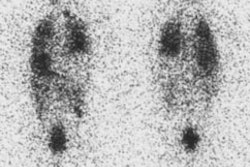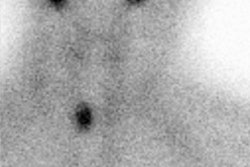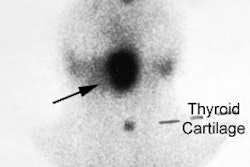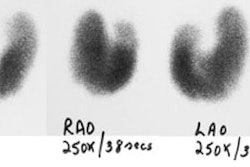J Nucl Med 1994 Dec;35(12):1944-50
Radioiodine therapy for well-differentiated thyroid cancer: a quantitative
dosimetric evaluation for remnant thyroid ablation after surgery.
Samuel AM, Rajashekharrao B.
The influence of cumulative absorbed dose, initial dose rate and mass of the
remnant thyroid tissue on outcome of radioiodine treatment was assessed to
determine an optimum value of absorbed dose and initial dose rate predictive of
successful ablation. METHODS: In 87 patients with thyroid carcinoma treated with
0.85-9.55 GBq (23-258 mCi) of 131I to ablate residual thyroid tissue, the
cumulative absorbed dose and the initial dose rate were calculated. Following
therapy, the parameters of radioactive iodine uptake and effective half-life
were determined in each patient from the surface neck exposure rates measured
using a beta/gamma exposure rate meter. Mass of the thyroid remnant was
determined from rectilinear images after scatter correction obtained from
phantom studies. RESULTS: Sixty-eight patients showed complete ablation and 19
showed partial ablation of the thyroid remnant after radioiodine therapy. The
cumulative absorbed doses delivered to the tissue in completely ablated and
partially ablated groups were not significantly different (0.6 > p > 0.5).
The initial dose rate delivered to the tissue in both groups, however, showed a
significant difference (0.05 > p > 0.02). An initial dose rate of 3 Gy/hr
or more completely ablated up to 5 g of tissue in 54 out of 62 patients (87.1%).
Dose rate above 3 Gy/hr and cumulative doses above 300 Gy resulted in ablation
in 50% of patients with more than 5 g of tissue. CONCLUSION: In patients
receiving 131I to ablate thyroid remnant, the initial dose rate and the tissue
mass are determinants of successful treatment response.



